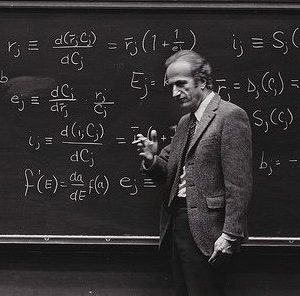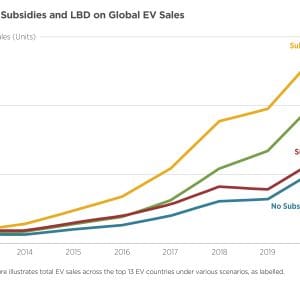Elections, Policymaking, And Economic Uncertainty
Today’s highly polarized political climate and pervasive uncertainty about future policy are exacting an economic price. A daylong conference bearing evidence of that fact concluded with a panel of eminent experts who provided historical context and guidance on how policy uncertainty can be tempered.
At the Elections, Policymaking, and Economic Uncertainty conference cosponsored with the Hoover Institution, Chicago Booth’s Steven Davis, Hudson Institute’s Christopher DeMuth and former Federal Reserve chairman Alan Greenspan shared their views of the political and economic climate heading into the final stretch of the U.S. presidential election. John Taylor, the Mary and Robert Raymond Professor of Economics at Stanford University, moderated the discussion.
In his opening statement, Greenspan cut right to the chase: “It’s the worst economic and political environment that I’ve ever been remotely related to,” he stated, noting that the political climate presents the most uncertainty for financial markets in his storied memory.
The former Fed chair called out the rise of populism amongst voters as a cause for concern, echoing the sentiment of many who view rising inequality as a source of political and economic upheaval. He foresaw a possibility of the U.S. heading toward stagflation—the combination of inflation and high unemployment that vexed economists and policymakers in the 1970s – in the near future.
Hudson Institute distinguished fellow Christopher DeMuth described what he views as a secular progression in the heightened political and economic uncertainty of the current climate. He echoed Mr. Greenspan, noting that “our politics has become much more populist” and articulated facets of regulatory reform that create heightened uncertainty among financial market participants as well as the broader base of U.S. voters. In particular, DeMuth discussed how the communication of proposed regulations affects investment psychology. In particular, he noted the fact that proposed reform can create a mixed message whereby different individuals interpret the path of reform in different ways before regulation is finalized as law.
Turning back to Greenspan, Taylor looked for answers to the conference’s headline topic: just what are the economic consequences of the uncertainties surrounding elections and other aspects of democratic decision-making?
Greenspan reiterated a concern he has voiced elsewhere: that increased spending on social security and health care drowns out private investment, causing slower growth. This economic slowdown naturally manifests itself into slower productivity growth. With a less than one percent per year growth in worker productivity, uncertainty in labor markets and the trajectory of economic growth have important effects on the decision-making of voters. Just how the presidential candidates plan to address entitlement reform remains to be seen.
The final remarks for the closing panel were presented by Steven Davis, the William H. Abbott Professor of International Business and Economics at Chicago Booth and one of the conference organizer’s. Davis has written widely on economic and policy uncertainty and agreed with many of the points Greenspan and DeMuth raised in their opening remarks.
In defining policy uncertainty, Professor Davis has made a point of recognizing that uncertainty manifests itself in several ways: uncertainty as to who will be making policy decisions, uncertainty as to the types of policy decisions to be made once an official is elected, and uncertainty as to how policy decisions will affect the broader economic fundamentals.
To counteract such uncertainty, Professor Davis echoed the idea that regulatory architecture is best structured when its goal is to simplify the decision-making processes associated with those individuals most impacted by the regulation. Whether it be financial or social reforms, regulations designed to facilitate simplicity for the regulated are generally the best approach.
Professor Davis mentioned the policy uncertainty index he developed with Nicholas Bloom of Stanford and Northwestern University’s Scott Ross Baker, who took part in the conference as a discussant. The trio created a measure of the level of uncertainty using sophisticated automated text analysis of newspaper articles and other sources. Recent research has investigated the effects of policy uncertainty on things like employment, output, and capital investment. Davis and his colleagues have shown that more policy uncertainty tends to reduce investment and employment.
Davis did caution the audience that the causal link between their policy uncertainty index and the slow recovery from the financial crisis of 2007-09 is not entirely clear. There could be other variables in the mix that have certainly caused economic weakness to drag on for as long as it has. However, Davis said, if U.S. policymakers can deliver a more certain and stable policy environment, macroeconomic performance is more likely to improve. This point echoed the sentiments of panelists Greenspan and DeMuth: more clear policy guidance is likely to result in a stronger economy, both at home and abroad.
Davis concluded by calling for an independent body established to ensure that proposed regulation underwent a scientific cost-benefit analysis and met an adequate threshold before being etched into law.
It’s certainly difficult to predict what voters will decide and how the economic plans of a new administration will play out, but all the panel members agreed: policy uncertainty carries a heavy price.
—Alex Verkhivker











